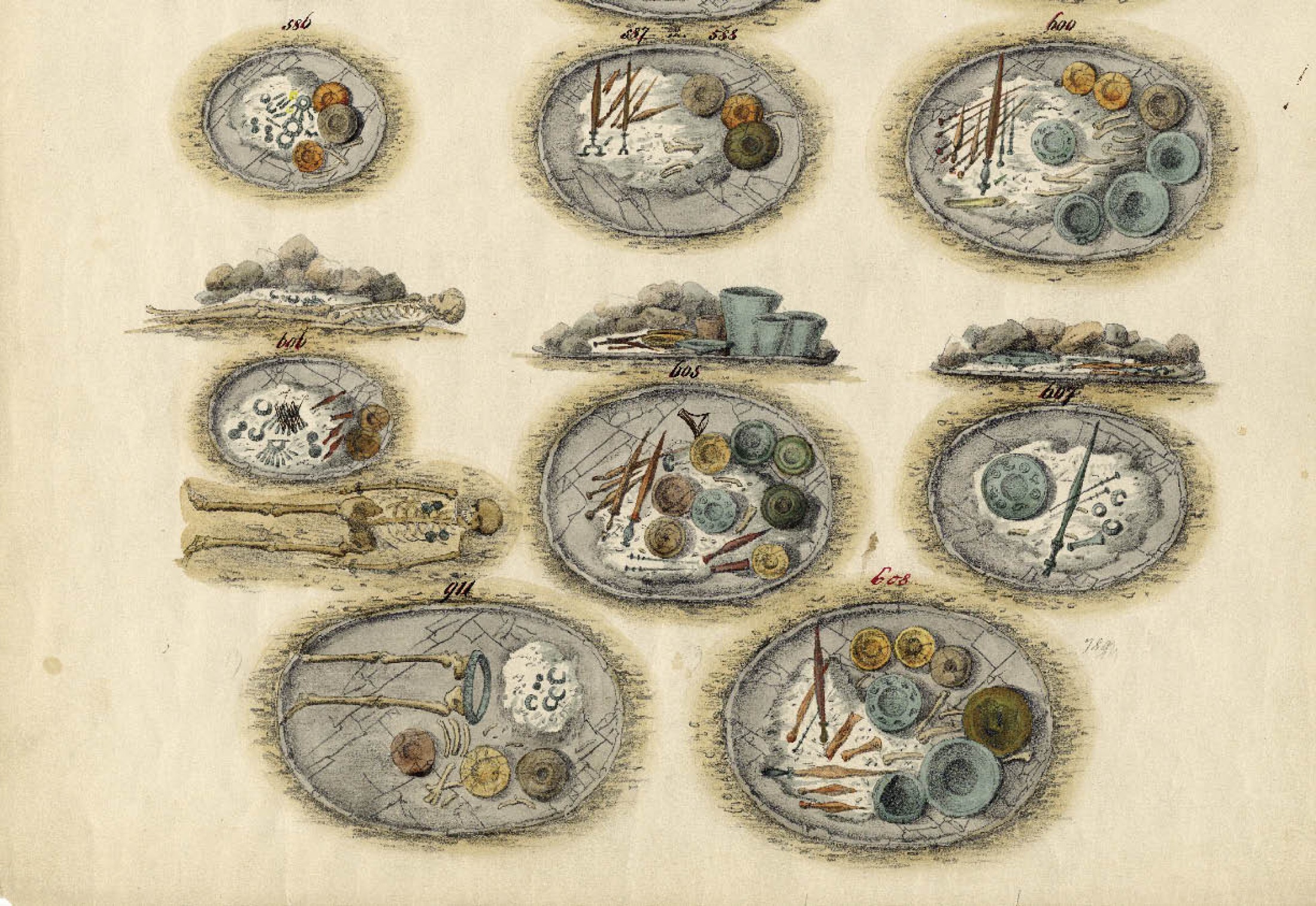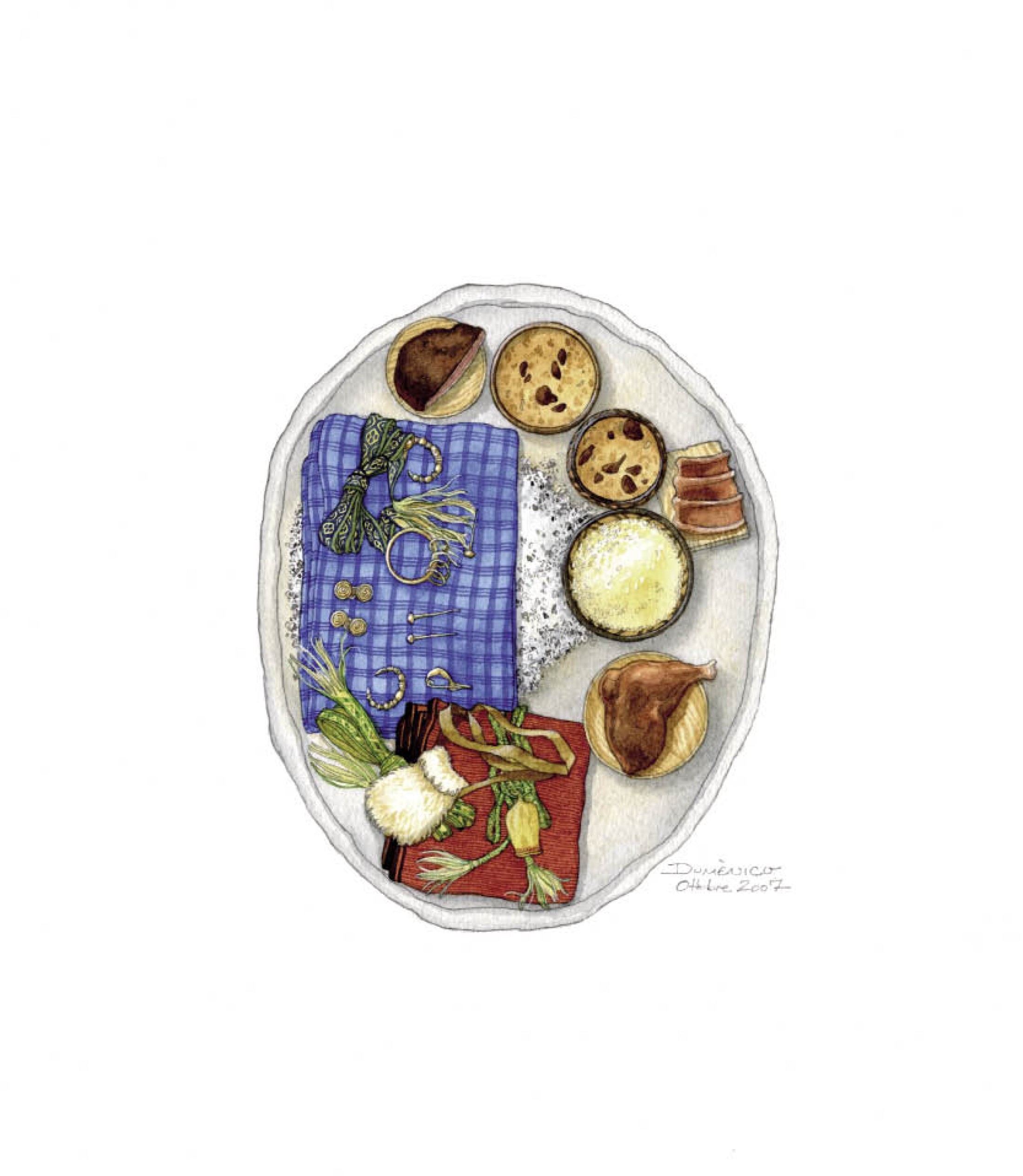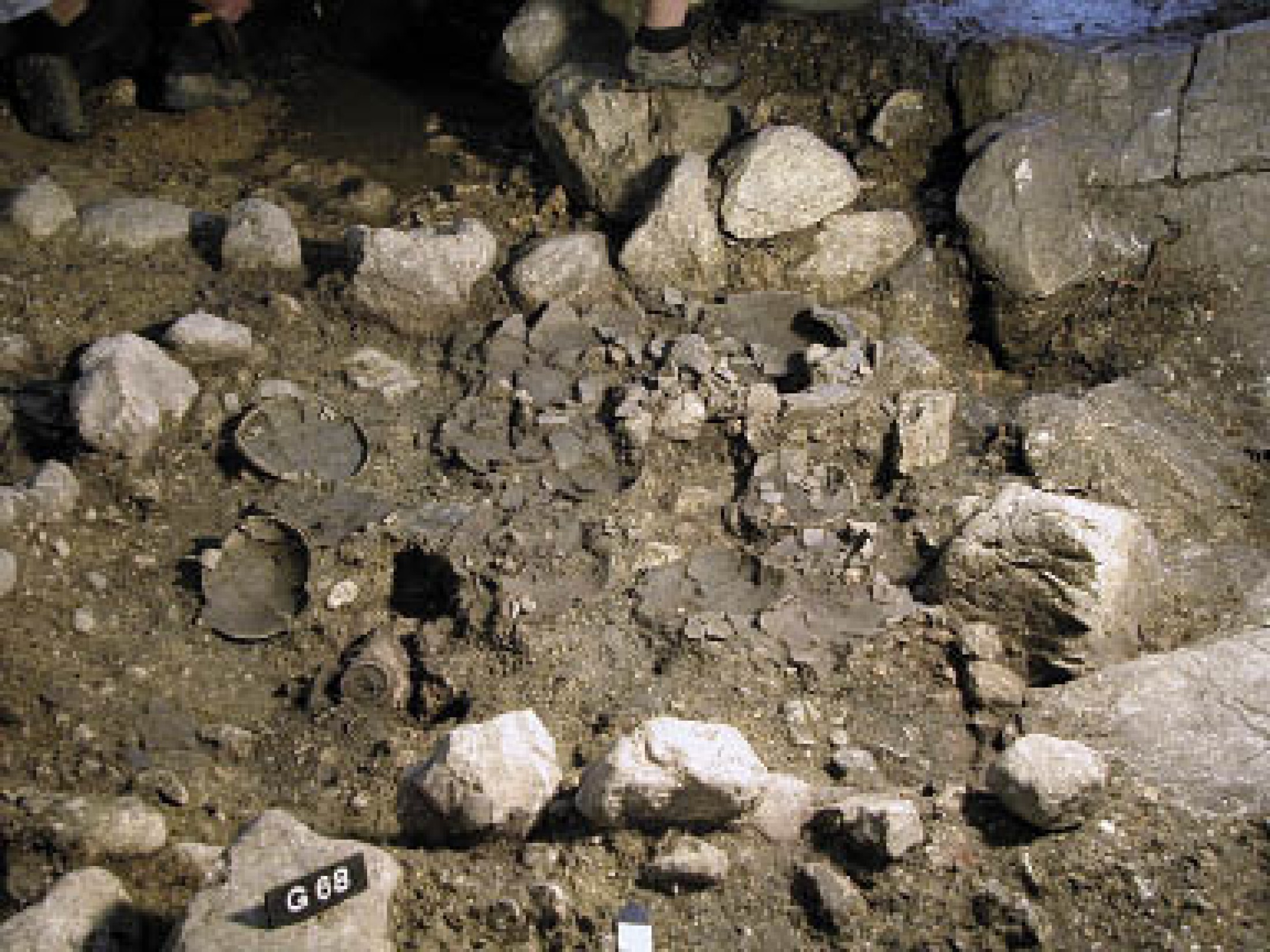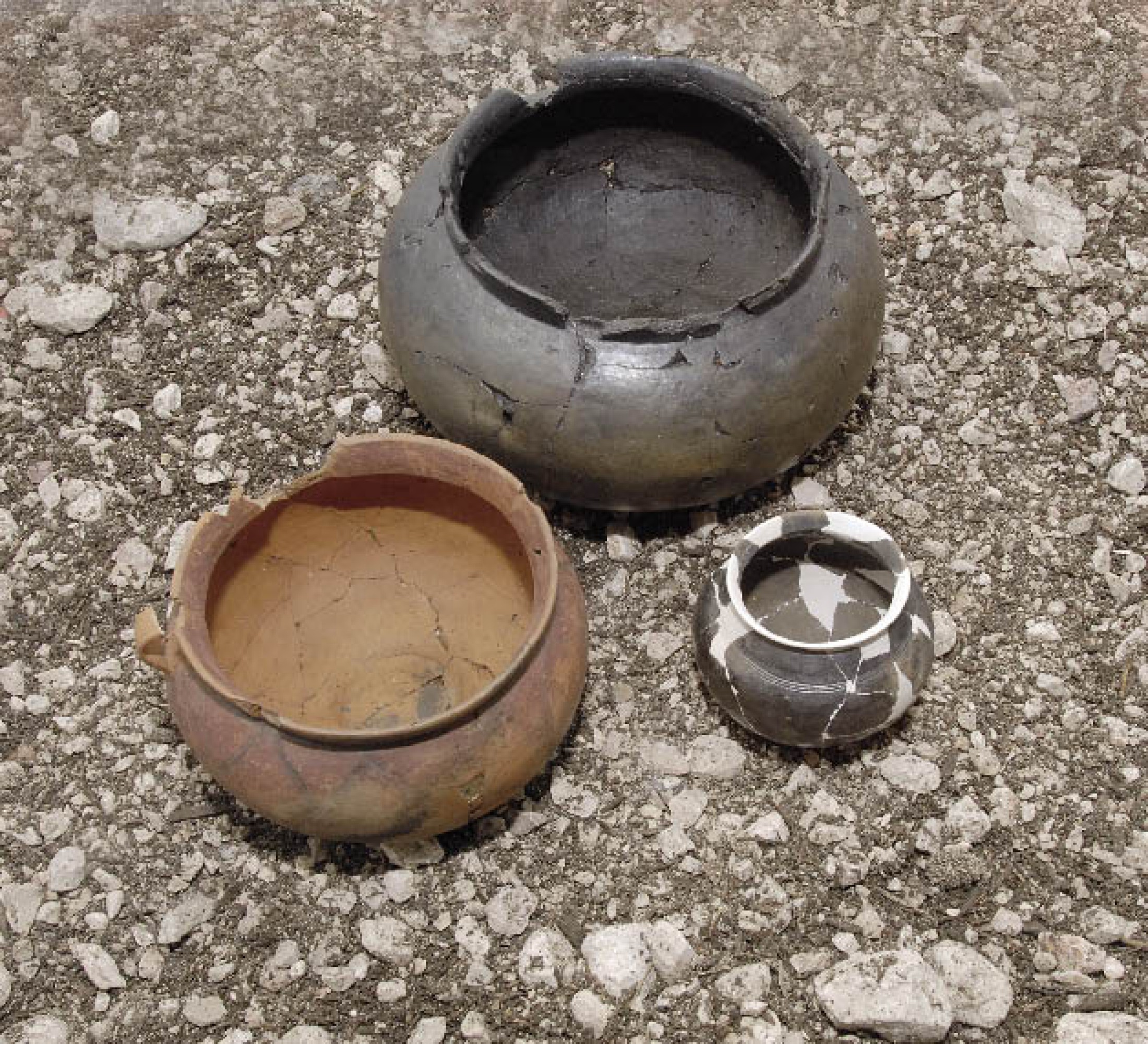Cremations at the Hallstatt burial site
During cremations the body was burnt on a funeral pyre – a more complex process than a standard body burial. This, combined with the fact that cremation graves contained more valuable objects than other graves, indicates that cremation burials were used for wealthy members of society.Cremation
Urn burials
Scattered-ash graves
Cremation
Cremations involved the deceased being burned on a funeral pyre, probably as part of a ritual ceremony attended by the whole community. After the ashes and unburnt or calcined bones had been gathered, the human remains were placed in an urn or directly onto the soil of the grave.Urn burials
The vast majority of the cremation graves in the Hallstatt cemetery do not contain urns, while the latter are quite common in other burial sites dating from the Hallstatt period. Of more than 700 cremation graves unearthed in the course of the Ramsauer excavations, only seven are urn burials, while the recent excavations yielded only five urn graves.Generally, the ashes and unburnt human bones are placed into clay pots. Two recent finds suggest that the container may also have been made of organic material. Urn graves are rather unspectacular: mostly, they only consist of one pot holding both the ashes and the funerary offerings. There may sometimes be several jars, an urn with the ashes and offerings, and pots for food and water.
Unseparated cremation graves
Unseparated cremation graves (Brandschütungsgräber) differ in their sizes and furnishings. Single ceramic are quite scarce; the majority of the furnished graves hold three to six vessels. In rare cases, we have found more than ten pots; two graves contained respectively 23 and 25 different types of clay pot.The ashes appear to be spread directly on the soil, but they may have been initially placed in organic containers of cloth, leather or wood. However, the concentration of ashes in some graves indicates this. In other graves the ashes are distributed in such a way that it is likely they were actually scattered by hand. Personal offerings such as jewels, weapons or status symbols lie on the ashes, on the body as it were, while various funerary objects are grouped next to it.
(Kern, A. – Loew, C.)







